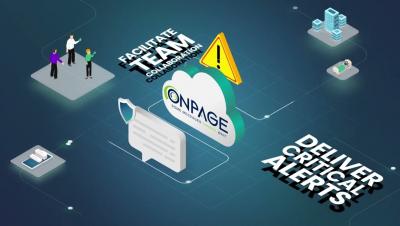OnPage is an Incident Alert Management platform that elevates critical notifications to the right person on call to remediate critical events. With Alert-Until-Read capabilities, dynamic digital schedules, escalation policies, incident reports, and redundancies, OnPage aims to ensure that critical alerts are never missed. OnPage serves many industries including, healthcare, information technology, managed services, IoT, and manufacturing. With over 250+ integrations, the solution extends incident alert management to popular ITSM (ticketing), RMM, monitoring and cybersecurity tools. On the healthcare front, OnPage integrates with popular scheduling, IoT, nurse calls, and EMR systems.




